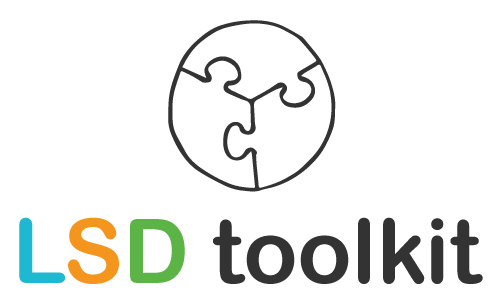Presentations are often boring, and a series of presentations is even more so. A tall person sits in an uncomfortable chair, squinting at a series of well-intentioned PowerPoint presentations. Stakeholders’ time is scarce in this respect. Because your team (s) often work on multiple projects, it is better to cluster presentations. Several teams do their pitch at one time.
The Liberating structure Shift & Share offers a good format.
Working method
The (original) Shift & Share is based on multiple presentation places and an equal number of speakers and groups of audiences that rotate. An example: there are 5 presentations. Then there are five presentation places and each speaker ‘does’ his or her presentation 5 times in a row. There are five groups of audiences who consecutively complete the presentations. This way every visitor sees every presentation.
Variant with carousels
In the carousel variant that I came up with myself, I think there is a little more dynamism. Those present are more actively involved. A big advantage is that the presenters do not always run the same program and that you can handle many more presenters. Here it comes…
Preparation Make an
inventory of the number of presentations, see how much time you have and divide the presentation space into 2 or more ‘carousels’ with a beamer and screen. In addition, put a number of flip charts on which the participants can write feedback per feature / presentation.
The session
Start centrally and explain what the intention is. Always show which presentations are in progress on the central screen, so what the participants can choose from. When all rounds are finished, you close centrally. The presenters collect the feedback that the participants have written on the flipcharts and discuss if there are any in-depth questions.
Time boxing Time boxing
is essential so explain clearly how long (or how short) teams have. For example:
– 8 minutes of presentation
– at 6 minutes a bell or signal from the agile coach (’round off’)
– 2 minutes for feedback and questions
– 2 minutes for extra feedback on the flip charts
– and on to the next round!
IN PRACTICE
I recently used the Shift & Share for a joint feature review, in preparation for a PI event. The 12 teams are given the opportunity to review 1 or more features and get feedback. Ultimately, 10 ‘presentations’ are submitted.
As Agile coaches and scrum masters we are asked to supervise the session. We take the Shift & Share as a basis. The canteen is divided into three rooms, two for the (simultaneous) presentations and 1 central screen in the middle. The ten feature demos will be discussed in 5 rounds, two at a time so that the attendees can choose (What do I find most interesting? What can I contribute most to?
Tips
- To make it extra dynamic, we let the presenters pitch for 1 minute beforehand what they are going to do and why people should come and see them. This breaks the ice and makes the Shift & Share extra fun.
- Sound is the biggest enemy of the Shift & Share. Try to space the carousels as far apart as possible.
- Do not place chairs, but let people stand. This makes it much more dynamic. After each presentation they can walk around or switch carousel anyway.
- This working method is dynamic, so it is also very suitable for inviting board members and management.
- Finish with a plenary evaluation. I use a mentimeter myself.
More information
Read the entire instruction of the liberating structure Shift & Share here
